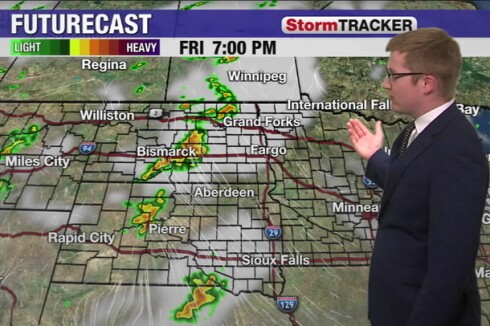WILLMAR, Minn. — As the winter snows deepen, the phone calls come in to Jared Wiklund and other staff with from people asking if the organization offers feed they can put out for the birds.
Wiklund also took a call from a snowplow driver in southwest Minnesota who pleaded with him to tell people not to place feed along the roadways. He told Wiklund that he and other plow drivers are unwillingly striking the feeding birds, or more often, burying the feed in 10 inches of heavy, slushy snow.
ADVERTISEMENT
That snowplow driver’s call is only Exhibit A in why people should not put out feed for pheasants, said Wiklund.
“Holding off from feeding is really the best thing you can do,” Wiklund said. “At this point, a pile of cracked corn isn’t going to save the pheasants.”
Here’s why feeding the birds can do more harm than good:
Feeding pulls the birds away from the quality thermal cover they need, and really depletes their energy reserves quickly, said Wiklund.
Feeding sites quickly become focal points for avian and other predators looking to make pheasants their next meal.

Feeding also brings birds together and increases the risk of disease, including avian influenza.
And in those areas where chronic wasting disease has been found, putting out feed can be illegal, he added.
ADVERTISEMENT
The early arrival of snow and the length of time it has covered the landscape are stressing the birds, said Wiklund. Pheasants are spending more time in search of food, and are more out in the open where people are seeing them. That is no doubt leading many people to put out food for them, Wiklund noted.
Very rarely are the birds going to die from starvation, but freezing mortality can be a huge problem this time of year, according to Wiklund.
Pheasants are hardy and resourceful when it comes to finding food, he explained. The threat of freezing by being pulled from thermal cover and into the range of predators are the far greater dangers.
The real issue is habitat, or more accurately, the lack thereof.
Now is the best time of year to begin planning to do something about improving habitat for pheasants and other wildlife, said Wiklund. Planting a minimum of 15 rows of short-stature woody cover is one of the best ways to help wildlife. Planting food plots — a minimum of three acres is recommended — can also play a big role in helping pheasant populations.
Pheasants Forever offers free technical assistance for landowners looking to .
There’s also a unique opportunity this year to learn about habitat and meet with the experts when Minneapolis is host to the Feb. 17-19 in Minneapolis.



















